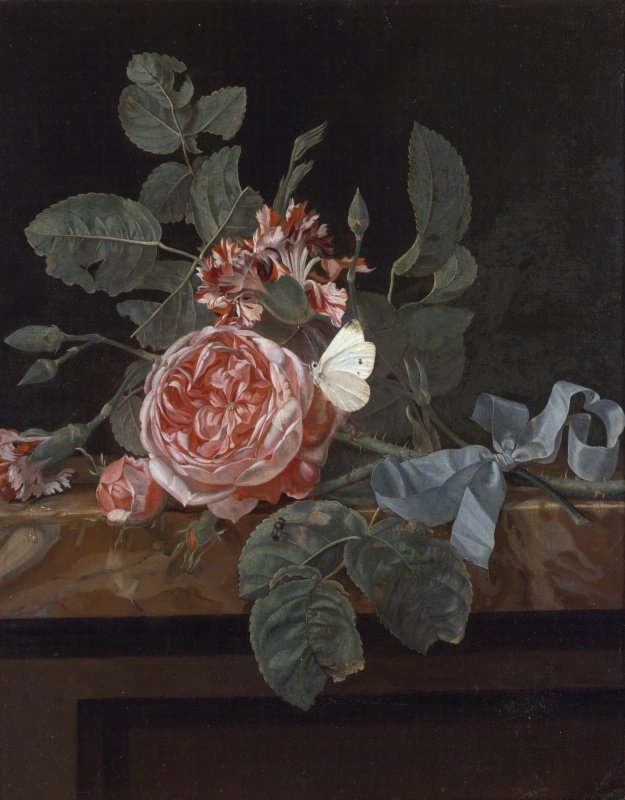Happy New Year!
To ring in 2024, I’ve been invited by the Netherlands (“NL”) to create a piece for CES once again. I’ve been very grateful for the on-going unique, creative challenges I’ve been able to collaborate with them. Here’s a teaser of the piece I created — to be further unveiled at CES in a few days!
There were a few major key points I wanted to tackle in this piece, tying to the NL goals:
For the Netherlands to achieve a circular, sustainable economy by 2050
Integrate a national conversation about Diversity, Equality, and Inclusion and Social Responsibility
To highlight the Netherlands as an innovative country
To distinguish the Netherlands Tech Pavilion apart from the many other booths and displays at CES — a very tech-heavy, tech-focused conference.
Right off the bat, I wanted to integrate plants and floral elements into the NL Pavilion design, especially at such a tech-heavy conference. I believe it shows NL's commitment to working together WITH nature, portrayed by all 70 startups at CES 2024 that all contribute to NL's goals for a circular economy.
Inspiration and Process
I recently learned about incredible women artists from the Dutch Golden Age, erased and forgotten from history and recently rediscovered: Maria Sibylla Merian, Rachel Ruysch, and Maria van Oosterwijck. (In more detail below.) I want to honor their botanical illustration work, ALSO because they were women who worked with paints AND were keen observers and students of science. I personally admire how some women artists of the time taught each other and learned from each others' work. This is all about community, growing together, and lifting each other.
Inspired by their work, I evolved components of their work to create the floral linework around the NL pavilion, using Adobe Fresco for drawing the linework as vectors.
Maria Sibylla Merian (1647 - 1717)
Merian set the standard for botanical illustration! Her step-father, Jacob Marrell, was a floral painter. Her work exhibits a beautiful intersection of botany and zoology. Not only was she a wife + mother, she was an accomplished author, entomologist, and naturalist. She studied insects closely, specifically the lifecycles of silkworms and caterpillars. She was all about living observation. It is possible that she helped tutor Rachel Ruysch!
Fennel by Maria Sibylla Merian
Water Hyacinth with Marbled or Veined Tree-Frogs and Giant Water-Bugs by Maria Sibylla Merian
Rachel Ruysch (1664 - 1750)
Ruysch had an impressively successful career of 70+ years painting flowers! Her father was an anatomy and botany professor, who categorized a lot of specimen. Like Merian, she also had a strong influence of science in her artistic practice. Ruysch’s famous still-lifes included flowers that couldn’t bloom in the same season, while also illustrating flowers from a variety of angles. This revealed her deep knowledge and familiarity with these plants. She also impressively became a court painter in Düsseldorf, Germany.
Flowers in a Glass Bowl by Rachel Ruysch
Still Life with Rose Branch, Beetle and Bee by Rachel Ruysch
Maria Van Oosterwijck (1630 - 1693)
Oosterwijck lived independently, was able to join the local artists guild (uncommon for women of her time). Her work, known as “vanitas,” included aspects of worldliness, the pleasures of life, and “momento mori” — reminders of death and the fragility of life. Her work was bought by royalty (King Louis XIV, Queen Anne of England) which kickstarted a trend of floral and still life paintings in her time.
Roses and Butterfly by Maria van Oosterwijck
Roses, Carnation, Marigolds and Other Flowers with a Sunflower and Striped Grass by Maria van Oosterwijck
More notable women artists of the Dutch Golden Age:
Clara Peeters
Judith Leyster
Anna Maria van Schurman (first woman to attend university in Netherlands!)
Magdalena van de Passe
Margaretha van Eyck
Gesina ter Borch
Alida Withoos
How Their Work is Showing up at CES 2024:
Adapted their floral still-life work into digital with Adobe Fresco’s vector brushes
Several floral design assets
Overlayed floral design on top of pavilion wall design drafts, provided by So Expo
And I took elements of their still-life paintings and incorporated them into the “Sustainable Garden” VR painting, decorating and visually emphasizing remarkable inventions that have come from the Netherlands.
This is a component of the virtual “Sustainable Garden” that will be featured at CES 2024 at the Netherlands Tech Pavilion, January 9. Will you be at CES? Want to see my vision of 👾 tech + 🎨 art + 🌱 sustainability + 💖 humanity?
Come to our virtual “Sustainable Garden,” add to the garden with YOUR ideas of a more eco-friendly, sustainable Earth! The Garden will be available on Opening Day only but you'll still be able to add your ideas thru all days of CES!
TUESDAY, JAN 9
NETHERLANDS TECH PAVILION
Tech West: Venetian Expo @ Eureka Park
Hall G, Booth 62100
Thank you to the Netherlands, the Netherlands Consulate of SF in USA, Sietze Vermeulen and Jacco van der Aart for bringing me on-board with this wonderful collaboration!
More about NL & Climate Change, NL Tech & Challenges, NL & Human Rights, NL circular economy goals.































